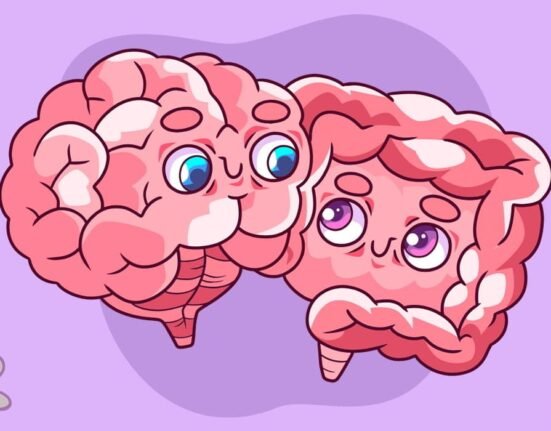The Case of T:
Mom and Dad were surprised when their usually hassle –free 21-year-old son T., who had come home for a month from hostel to prepare for his 5th semester engineering exams announced a day before his return tickets that he wasn’t going back for his exams!! The unsuspecting parents knew that he had been struggling through engineering college with backlogs in each semester and he had always been an average student, but nothing forewarned them of this drastic decision! They decided to approach a therapist to help him with his studies. There were even less prepared for what was in store for them. In therapy T. admitted to using “Weed (popular name for cannabis) occasionally” and agreed to share the fact with parents. However, this turned out to be an understatement as T.’s mental health rapidly deteriorated and he developed paranoid delusions and hallucinations. Sadly, T. was already deep into cannabis addiction. With the help of psychiatric medication and subsequent enrolment in an in-house rehabilitation program for six months T. gradually recovered and went on to reclaim his life and complete his degree.
In retrospect, the parents found that they had overlooked a few changes in his behavior- T had confined himself to his room for most part of the month and did not want his room to be cleaned. He seemed to sleep through most of the day (which they thought was because he studied late into the night). He had been avoiding meals and speaking to his parents. He also had occasional visitors introduced as ‘new friends from college’ whom the parents had not seen before, but spent long hours in his room. There was a smell of smoke which T attempted to suppress with incense sticks and unfamiliar ingredients had been found in the toilet once or twice. All these signs were later understood to be the tell-tale signs of addiction. This article highlights the significance of the problem of drug addiction and explores psychological patterns found in addictive behaviors.
Introduction:
T. is only one among the 275 million people, or roughly, 5.6 per cent of the global population aged 15-64 years who are into drug addiction as estimated in the World Drug Report released by the United Nations Office on Drugs (UNODC) in 2018. The Report finds that drug use and the associated harm are the highest among young people. Most researches suggest that drug abuse and dependence begin as early as 12-14 years or in later adolescence at 15-17 years making adolescence a critical risk period for the initiation of substance use and abuse. Many researches have further pointed out that drug addiction and related issues may peak among young people aged 18-25 years.

Cannabis is a common drug of choice for young people, particularly in India. In fact, cannabis use and addiction is so widespread in college-going students that it has claimed its spot in the top three most addictive substances of all time namely tobacco and alcohol. Taking a closer look at what was happening with T., we find that his behaviors were related to the effects of weed which include losing interest in health, life, academic activities, old friends and goals. Its use creates a lowered awareness that very often prevents a weed abuser from being able to see his or her own impairment. Most distinctive effects of weed use is the loss of motivation. Students lose interest in school perhaps in part because of their ability to think clearly becomes impaired. They may struggle to remember things they are trying to learn. Long-term use is associated with a condition that includes apathy, impairment of judgment, lower ability to concentrate and loss of motivation and ambition. Physically lowered appetite is noted. Mood changes such as irritability, anxiety or depression and sleeplessness may follow because of withdrawal. The chronic user may feel that life is just passing him or her by.
Addiction is a complex process that has social, economic and psychological ramifications. How does a person get into the process of addictive behaviors? Some socio-economic factors that contribute to this choice are- “easy availability and low cost”. Extending the socio-economic gradient to create a typology, the aforementioned report could classify users into one of two extreme typologies of drug use among young people in India: club drugs in nightlife and recreational settings among affluent youth; and use of inhalants among street children to cope with their difficult circumstances. What pulls a person to such addictions? What drives them deeper and what keeps them hooked on to it? What psychological typologies and mechanisms may be associated with addiction? These are some well-explored psychological avenues that are highlighted below;
The Process:
When the behavior of addicts is explored, the sequence of behaviors seems to follow a spiral, where at each stage the behavior compounds into the next with increasing negative consequence.
Stage 1: Exploratory user: In the beginning a potential user is invited to using the substance to “see how it feels” by other seasoned users and experiences the thrill of it. At this stage the new entrant also ‘learns the ropes’ i.e. how to use the substance and how to procure it.
Stage 2: Recreational user: At the next stage, the fresh user, having had a pleasant experience the first time, allows himself or herself to enjoy the effects again ‘just for fun’ or ‘relaxing’.
Stage 3: Habitual User: Here the user begins to look for regular and frequent opportunities to use the substance and spends more time with those who are regularly engaged in its use. At this stage, a psychological dependence on the substance is created and the person needs the drug to cope with the routine tasks.
Stage 4: Dependent User: By now, the user is quite seriously onto the substance and is preoccupied with seeking and using the substance. He or she spends much time under the influence of the substance and the body does not seem to function without it. There is a serious disruption in performing routine roles and responsibilities like academic work and occupational functioning. Relationships too begin to get affected. The user by now has built what is called ‘tolerance’ for the substance i.e. the person needs to take in larger mounts of the substance to get the same effect as before.
Stage 5: The Addicted User: At this stage, the addicted user is now unable to function without the drug for even a short while. Whenever the person is away from the drug, his/her mind and body ‘craves’ it and is focused on returning to the drug. There may be active signs of physical distress in its absence called ‘withdrawal’. The user, at this stage cannot recover without medical and professional help. Sometimes the effects of the addiction are so severe that it may drive the person to suicide or lead to such debilitating bodily harm that the eventuality may lead to death.
Examining the process of addiction, it becomes clear that once a person crosses the second stage, they are already slave to their habit and the drug. For concerned professionals and social members, the question then arises that- “Is every recreational user is steered to addiction?” The answer, thankfully, is “no”!!! The next question that naturally pops up is then, “What separates the non-users and occasional users from the addict?” Are there specific personality factors or psychological processes that can be identified, which drive a person to addiction?
Why do addictions occur?- Psychological Theories of Addiction:
Behavioral theories
Behavioral theorists propose that addictive behaviors are learned behaviors. A child who grows up seeing an adult using a smoke or a drink to relax builds an inner template that substance can be used to relieve tensions and negative states. This template stays within and later in life when experiencing a need for relaxation the person naturally reaches out for the known sources namely addictive substances. Further, the behaviors may also be a result of conditioning, which means that a person who uses the drug and experiences relief from negative mental states by doing so creates a mental association of drug use with pleasant effects and then seeks it repeatedly to experience the pleasant effects.
.jpg)
Personality Theories:
Some psychologists propose that there are distinct personality types that are associated with addictive behaviors. Addiction is associated with people who are impulsive i.e. act before considering consequences, have high need for thrill-seeking, risk taking and may be willing to flout social norms. H. Eysenck, who is well known for his trait theory of personality, explains that persons who are high on neuroticism i.e. they are moody and have poor control over their emotions OR those who are high on psychoticism i.e. they are asocial or antisocial and have predominant feelings of hostility and resentment are prone to addictions. From the point of view of Stress theory, addiction may be assigned to poor coping skills i.e. the person may lack adequate healthy repertoire of skills to deal with inner states of tension or frustration that may be caused by internal or external factors. Existential theorists consider addiction as arising out of a sense of meaninglessness, alienation or an inability to find a purpose in life. (Teeson,2002).

Psychodynamic theories:
Psychodynamic theories assign unconscious motives such as the own and others behavior through addiction. The concept of defense mechanisms has interesting contribution in the understanding of maintenance of addictive behaviors. Defense mechanisms are common used unconscious processes that protect the ego, which is the part of us that answers our inner needs and meets external demands. Most people employ these defense mechanisms to tweak their everyday realities as a means of coping.
When it comes to drug and alcohol addiction, a person’s defense mechanisms become twisted, creating a reality where his or her negative behavior is never the fault of the substance. What is being defended is not the person but the addiction;
Denial:
The addict will rarely confess to the addiction or admit to the true extent of use or its effects on their lives. It must be something else!
Regression:
is the going back to childish behavior. In the addict, this can come up as a refusal to get out of bed or refusing to talk with someone who tries pointing out his or her destructive behavior.
Shifting blame:
is effective in pulling the focus away from the addiction. The addict may present oneself as a victim while at the same time justifying the addiction’s reason for being. “I take this ….(drug) like this because I’d go crazy around here otherwise,” or “because my parents don’t try to understand me”…is an example of a shifting blame statement. A related phenomenon to shifting blame, projection is taking one’s own impulses and feelings and attributing them to others. Addicts have been known to project their own substance problems onto someone close to them, if that person is engaged in similar behavior or was at one time.
Compartmentalization:
occurs when the addict separates a part of themselves (usually the part that does not conform to their personal beliefs and values) from all the other parts. By this, they can avoid the guilt that may come from engaging in the self- defeating behavior and maintain a good image of themselves.
Repression:
occurs when denial no longer gets the job done. It allows the addict to simply forget the effects of their behavior. In fact, addiction itself is a form of repression, since the addict’s inability to deal with reality leads him or her to abuse a substance, which leads to a greater need to alter or escape reality, which leads to more substance abuse, and on and on.
Undoing:
Sometimes addicts try to “take back” destructive behavior in ways that leave the addiction unaddressed. It can be something like a student buys his/her girlfriend/ boyfriends gifts and flowers after spending a three-day marathon of substance overuse. Undoing often comes with an apology and the promise to “change” or “do better.”
These and other defense mechanisms are necessary to the preservation and growth of an addiction. When left unaddressed, addictions can move from defensive to offensive, changing the addict’s reality to the point where he or she is unable to imagine a world outside the addiction
.jpg)
Cognitive theories:
Cognitive theories assign addiction to poor self- control or “weakness of will-power” i.e. the person lacks what it takes to control him or herself from engaging in the harmful behavior or self –defeating behavior. Moreover, they may lack the strength of will to explore and adopt a more appropriate behavior. Self- regulation is another such cognitive mechanism which plans, organizes and executes our goal-directed behaviors. The absence of adequate self -regulation could also lead to addiction and serve to maintain it.
Over and above these, psychological factors include family related factors. Families who have permissive attitudes towards substance may pre-dispose youngsters to substance use and addiction. Family discord, absence of close ties within the family, over-controlling parents, poor communication patterns, domestic violence are some more factors that have the same effect. Genetic and neurobiological factors, and other social factors like belonging to the lower socioeconomic strata or living in a neighborhood where such behaviors are prevalent also have a strong impact on addictive behaviors.

Conclusion:
Once an addicted individual is identified, the journey of extricating him or her from the clutches of the demons of the substance begins. It is by no means an easy one for any of the stakeholders namely-the afflicted person, the family members and the professionals involved. The process may involve hospitalization and institutionalized care at a rehabilitation facility and a team of caregivers come into the picture. Teams of physician, psychiatrists, nursing staff, clinical psychologists’/ rehabilitation psychologists or counsellors, as well as social workers are required. With the combination of medication, psycho-education, therapy and a restructured routine, addiction can be slowly cast away from the life of the addict. The success of the treatment program depends on a number of factors such as: identifying accurately the psychosocial factors involved in the addiction and its maintenance; motivation of the individual, presence of caring individuals in the person’s life, family involvement and support, prior adjustment level of the individual and presence of rewarding activities in the persons new found life. The inner struggles and feelings of some addicts are well summarized in the words of the writer Edgar Allen Poe “I have absolutely no pleasure in the stimulants in which I sometimes so madly indulge. It has not been in the pursuit of pleasure that I have periled life and reputation and reason. It has been the desperate attempt to escape from torturing memories, from a sense of insupportable loneliness and a dread of some strange impending doom.”
For some it is a pursuit of pleasures and for others an escape from pain….!!!













Leave feedback about this